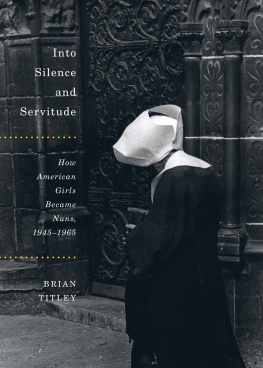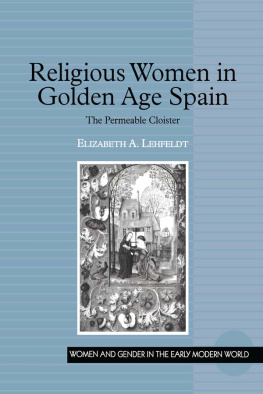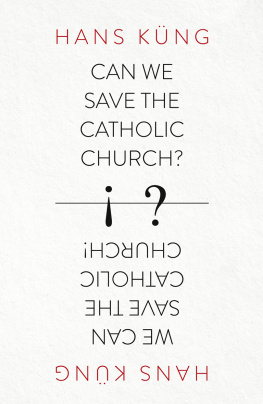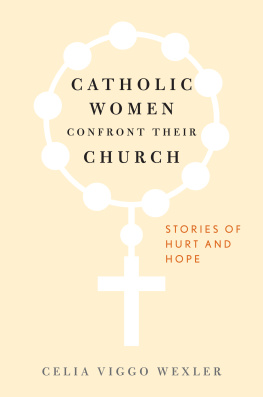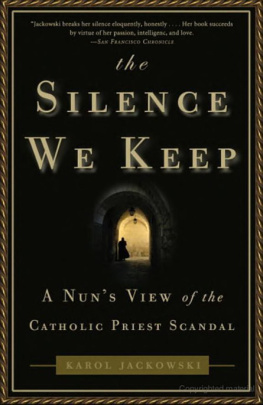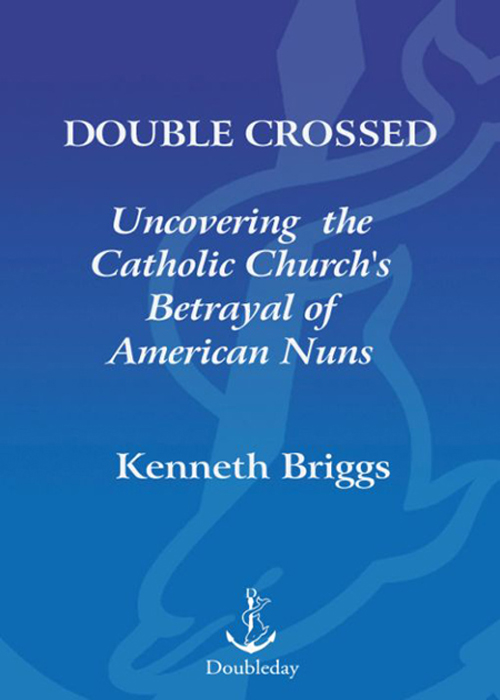
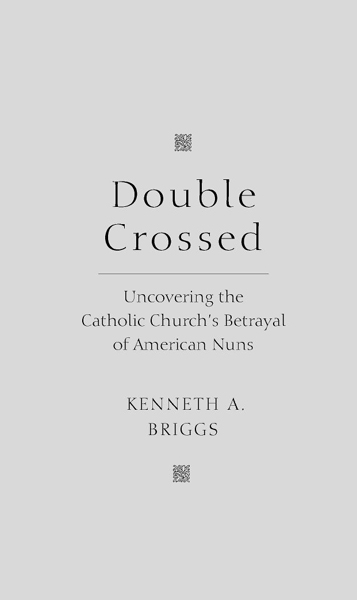
Table of Contents
To Matthew and Joanna
In Memoriam
Jonah, Jesse, Kleone, and Isabelle
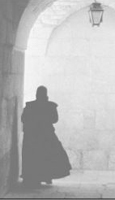
DOUBLE DAY
New York London Toronto Sydney Auckland
Preface
NO FIGURE HAS etched a more indelible impression on the nations psyche than the nun. A vivid picture of the sister wrapped in a mysterious bundle of wool, with only a cameo of her face showing through, remains deeply embedded in the minds eye of Catholics and non-Catholics alike. Sisters are the stuff of legend, fixtures in a cascade of plays, movies, television shows, Xerox commercials, and endless kitsch. Businesses crank out dolls, hand puppets, jewelry, T-shirts, and other products in their image. Some of these items evoke fond memories; others invite ridicule. Meanwhile, most nuns these days have moved so far from that portrayal that connections between the past and the present are often difficult to trace. Nearly everything from the old dayshousing, work, prayer, dresshas been drastically altered.
But the specter of most sisters in street clothes these days does not easily displace the old larger-than-life picture of Sister Benedict swathed in a graceful uniformitself modeled on the street clothes of eighteenth-century widows of eastern Europe. The fact that most Catholic sisters now work largely outside Church institutions has done little to curb the old-fashioned, in-house depictions such as are found in the films Sister Act and Agnes of God, in which nuns remain in fanciful, antiquated convents of yesteryear. An updated version occasionally does get through, notably the movie based on Sister Helen Prejeans book Dead Man Walking, the story of her ministry to a death-row inmate. It was by far the best profile yet of the contemporary sister.
Image, of course, is crucial in the sisters struggle to stay alive. Only half a century ago, nuns were clearly set apart from the world behind walls, committed to a monastic schedule from sunup to sundown, combining prayer with a rigorous day of teaching or ministering to the sick. That image has been swept away by immense changes seemingly approved by the Church and enthusiastically embraced by the sisters. Communities cannot live off the nostalgia, nor do they want to. A new image has yet to replace the old one and time is running out.
Though the terms nun and sister are now used interchangeably (along with the more outdated and confusing word religious), until the last few decades these terms held sharply distinct meanings. Nuns were the insiders, those who lived in canonical cloisters practicing contemplation and rarely if ever venturing outside. Their lives were carefully orchestrated and always under the authority of a superior. Pope Boniface VIII way back in 1298 had issued a bull insisting that true nuns be confined to cloisters, though the same restriction was never imposed on male orders.
Sisters were defined as those who werent bound by strict cloister, who left their convents to work in Church institutions such as schools and hospitals. Without the sisters, the American Catholic Church would never have been built and the worlds largest private school system would never have taken root. Until early in the twentieth century, the existence of these noncanonical women was tolerated but they were not equal to the orders of nuns.
Over time, nuns have been revered, feared, and sometimes loathed by Catholics with long and sometimes hyperbolic memories. Nearly every Catholic school graduate taught by the sisters loved and admired some and steered clear of others. The mean nun story has become a genre, featuring the ruler-wielding, ear-yanking sisters in whom the mercy of God was undetectable. As a variety of urban legends, these tales are sometimes gross exaggerations and often told secondhand, or further down the line, as if they had been suffered by the tellers themselves. While inexcusable meanness certainly existed, it existed in a context in which parents expected nuns to both infuse and enforce a Catholic culture that nuns had not, for the most part, designed. It was a tall order. Classes were often bursting at the seams and resources were thin. Most of the sisters appear to have managed well, even admirably, but there were misfits, some of them emotionally unstable, who were harsh and punishing. Given the otherworldly cast of their role, when violence erupted it was all the more memorable.
A shocking picture of another kind emerged in 1985 when the WallStreet Journal reported that legions of retired nuns were suffering because their communities (also known as congregations) were too short of funds to provide adequate support. Some nuns, the Wall Street Journal said, were actually living in poverty, on food stamps. The newspaper set the amount needed to meet the deficit in retirement needs at $2 billion. That total has since swollen to $6 billion. For centuries, communities had been financially independent of dioceses and other Church structures, scraping by because there were enough sisters contributing the token wages they earned mainly as teachers and nurses. But something had changed since Vatican II: there were fewer women entering convents, and of those who remained fewer were bringing in income; at the same time, more and more nuns were retired.
The system had worked only so long as the active workers could carry the retirees. But now the system had collapsed. Some relief arrived in 1971 when the U.S. Congress allowed nuns to apply for Social Security for the first time. Communities were required to make initial copayments in order to trigger the flow of government checks. For some, that demand became a severe financial hardship. Even then, Social Security didnt solve the problem. A nun retired after a lifetime of service to the Church needed more than a Social Security check to live on. National drives to aid the retirees receive overwhelming support, most notably the bishops appeal, which nets more than twice as much as any other collection in the U.S. Church, but even with this generosity the funds put only a tiny dent in the deficit.
Though I have written about American religion for decades, I have paid too little attention to the Catholic sisterhood, an omission that reflects a larger and longer tradition of bypassing womens history. While the nuns were central to the story of American Catholicism and were key in showing the nations women the possibilities of assuming leadership positions in society, they have been largely overlooked or ignored by historians and journalists. In part, this neglect has been the result of the nuns exclusion from positions of power within the Church. Their subjugation to a male clerical order, I believe, not only kept them out of the public eye but also ultimately crushed their efforts to refashion themselves boldly and creatively. Much of the demise of religious orders at the dawn of the twenty-first century can be traced to the hierarchys refusal to make good on the promise of renewal made by the Vatican forty years before. My purpose in this book is to examine those four decades to see what happened. To say that the period has been topsy-turvythe most turbulent since nuns reached these shoreswould be an understatement. During this span of time religious life has been turned on its head. In these pages I try to explain what has happened.
Next page



